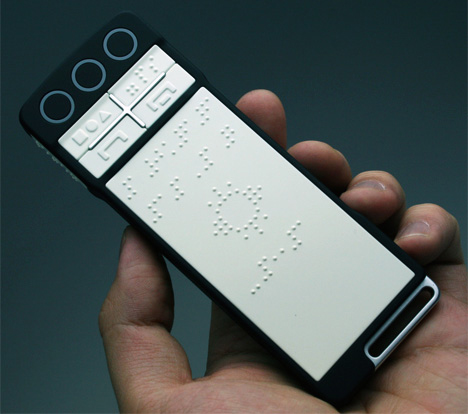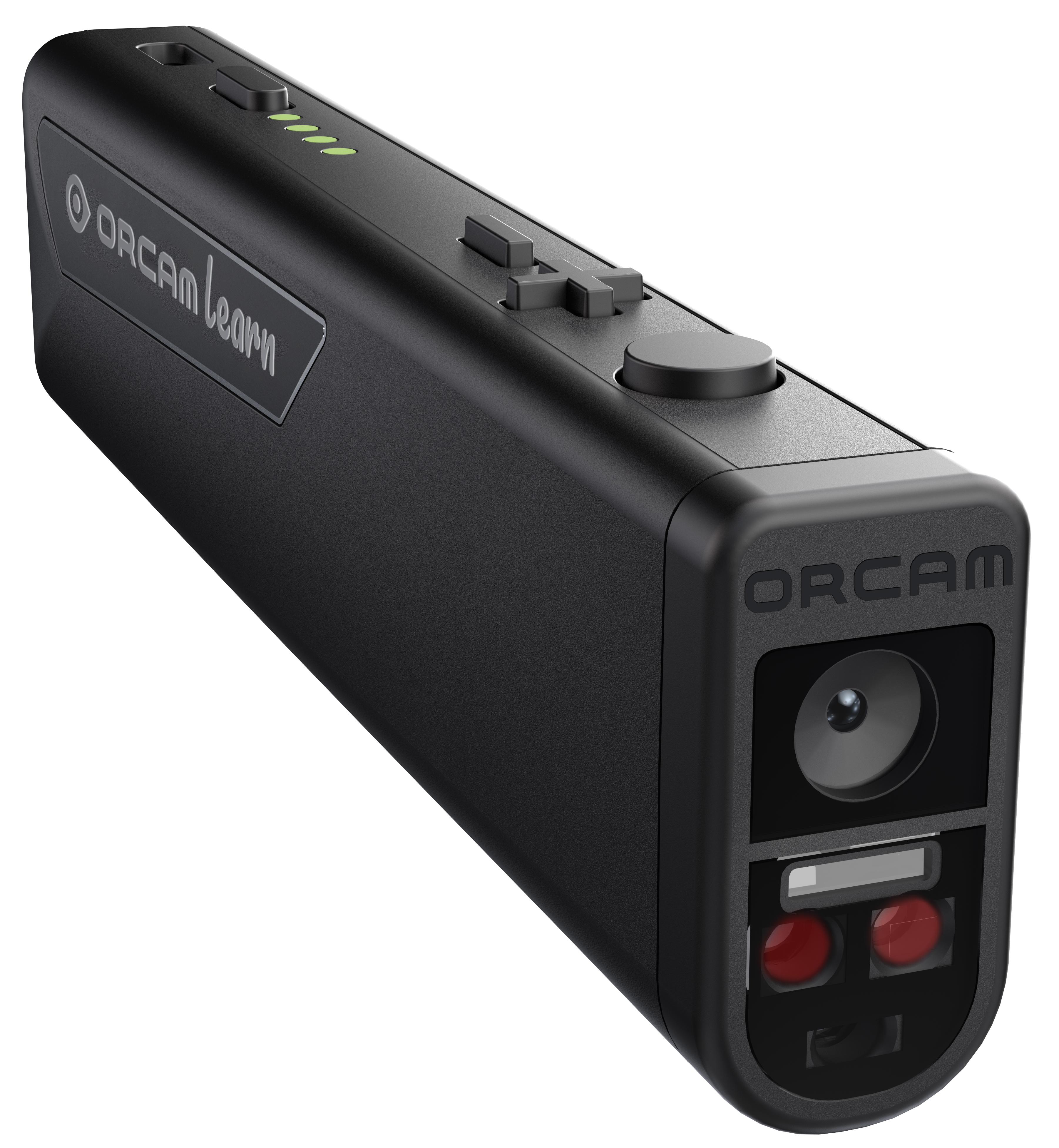Discover Ingenious Devices Made for the Aesthetically Damaged
The growth of cutting-edge tools for the aesthetically damaged stands for a considerable improvement in availability and freedom. Technologies such as smart glasses with AI capabilities and mobile applications designed to provide acoustic summaries are reshaping everyday experiences for customers. Additionally, wearable gadgets that utilize haptic responses boost ecological recognition, while modern Braille advancements provide new ways to engage with text. As these tools continue to progress, their impact on the lives of those with visual impairments raises important questions concerning the future of inclusivity and freedom in different aspects of life. What exists ahead in this technological landscape?
Smart Glasses for Navigating

Smart glasses made for navigating are revolutionizing the means aesthetically damaged people interact with their atmosphere. These advanced tools utilize a mix of cam technology, man-made knowledge, and auditory comments to supply real-time info regarding surroundings. By utilizing obstacle discovery systems, clever glasses can inform customers to possible risks, enabling safer wheelchair in both acquainted and strange settings.
The combination of GPS modern technology better boosts navigating abilities, enabling individuals to receive acoustic directions as they relocate. This hands-free approach not only promotes self-reliance but likewise empowers aesthetically impaired people to browse metropolitan landscapes with boosted confidence. Additionally, numerous clever glasses are equipped with features that identify landmarks and street signs, giving contextual details that improves the user experience.
Moreover, the growth of these gadgets is consistently progressing, with business working to boost the accuracy of item recognition and broaden the range of navigational attributes. As clever glasses become extra budget-friendly and available, they hold the prospective to significantly transform day-to-day live for visually damaged customers. Ultimately, these cutting-edge tools represent an essential step toward inclusivity, offering boosted wheelchair and a better sense of autonomy for individuals browsing the globe around them.

Mobile Application for Daily Living
Just how can mobile applications enhance the day-to-days live of aesthetically impaired people? Mobile applications are changing the way visually damaged users navigate their environments, handle daily jobs, and access information. These applications give important support with numerous performances, fostering independence and enhancing lifestyle.
Several ingenious mobile applications are developed especially for daily living. For example, apps like Be My Eyes connect aesthetically damaged customers with sighted volunteers through video calls, allowing them to receive real-time support with jobs such as reviewing labels or navigating unknown areas. Similarly, Seeing AI, established by Microsoft, utilizes expert system to describe surroundings, checked out message, and determine things, properly transforming a smartphone into a powerful device for day-to-day help.
Additionally, navigation applications customized for the aesthetically impaired, such as Aira and BlindSquare, supply audio-based instructions and environmental details, allowing users to traverse their surroundings safely and with confidence. Past navigating and prompt assistance, mobile apps also sustain organization and job administration, with features that help users establish suggestions, produce to-do checklists, and track consultations. In recap, mobile applications offer as essential resources, encouraging visually damaged people to lead even more independent and meeting lives.
Wearable Technologies for Support
Empowerment via technology is increasingly obvious in the world of wearable devices created to help visually damaged individuals. These innovative tools integrate flawlessly right into day-to-day live, boosting navigating and giving important responses to users. Smart glasses you could try here furnished with video cameras can recognize faces and read text aloud, permitting customers to communicate even more with confidence in professional and social settings.
Another notable advancement is the use of haptic comments systems in wearable devices. These systems make use of vibrations or other tactile signals to convey information regarding the user's environment, such as challenges or modifications in surface, improving flexibility and safety and security. Wearable modern technologies additionally consist of wristbands that attach to smartphones, alerting individuals to notices with subtle resonances, therefore enhancing connection without reliance on visual cues.
As these technologies remain to evolve, they are not only improving independence for visually impaired people but also fostering a better sense of inclusion in culture. By linking the space in between difficulties dealt with in day-to-day living and the capacity for autonomy, wearable technologies function as critical devices in the mission for equal rights and empowerment for those with aesthetic disabilities.
Audio Description Tools
Audio summary devices play an important function in boosting access for aesthetically impaired individuals, giving them with the capacity to engage with aesthetic media. Voice-activated assistive devices. These devices provide narrated descriptions of essential aesthetic aspects in films, tv programs, and live efficiencies, making certain that users can completely understand the context and emotions communicated via visuals
Audio description can be incorporated into various systems, including streaming services, movie theater screenings, and live movie theater. Several popular streaming solutions now include audio description as an availability function, enabling viewers to select it easily. In enhancement to mainstream media, specialized apps also exist, supplying audio descriptions for art exhibitions, galleries, and various other social events.
The performance of audio summary depends upon the skill of the storytellers, who must share visual information succinctly without diminishing the initial sound. Advancements in this field are likewise leading the way for even more customized experiences, where individuals can change the degree of detail and pacing according to their preferences.
Braille Innovations and Gadgets
Braille gadgets and technologies have actually substantially transformed the way visually damaged individuals connect with text and details. Modern innovations have actually led to the advancement of flexible tools that boost literacy and independence amongst users. Notably, Braille display innovations have developed, permitting dynamic analysis experiences. These gadgets convert digital message right into Braille, making it possible for customers to access a large range of pop over here information on smart devices, tablet computers, and computer systems.
Furthermore, mobile Braille notetakers incorporate traditional Braille input with contemporary functionalities, facilitating note-taking, scheduling, and paper editing on the go. Smart glasses for the visually impaired. These small gadgets typically include text-to-speech abilities, connecting the gap between Braille and acoustic information
Additionally, cutting-edge Braille printers have actually emerged, enabling customers to produce Braille tags, documents, and educational materials efficiently. This availability fosters greater engagement in professional and instructional atmospheres, eventually advertising inclusivity.
In addition, research study right into clever Braille innovations remains to broaden. Tools that incorporate expert system are being discovered to offer real-time navigating aid and contextual info, boosting the customer experience in varied setups. In general, these innovations mirror a commitment to empowering visually damaged people through modern technology, guaranteeing they can inexpensive eye exams near me easily accessibility and involve with the world around them.

Verdict
The advancement of cutting-edge tools for the aesthetically damaged substantially enhances self-reliance and quality of life. These innovations not just foster higher addition yet likewise promote autonomy in day-to-day tasks, inevitably adding to a more fair and accessible society for aesthetically damaged people.
As clever glasses become much more obtainable and budget friendly, they hold the potential to dramatically change daily life for visually damaged individuals. Mobile applications are revolutionizing the means visually impaired customers browse their settings, manage day-to-day jobs, and accessibility information. Applications like Be My Eyes connect visually impaired individuals with sighted volunteers by means of video telephone calls, enabling them to obtain real-time aid with jobs such as reviewing tags or navigating unfamiliar areas.Furthermore, navigation applications customized for the aesthetically impaired, such as Aira and BlindSquare, provide audio-based directions and environmental information, allowing customers to traverse their surroundings securely and with confidence.The advancement of ingenious devices for the aesthetically damaged considerably improves independence and high quality of life.
Comments on “Speech-to-Text Devices for Low Vision: Narrowing the Communication Gap”